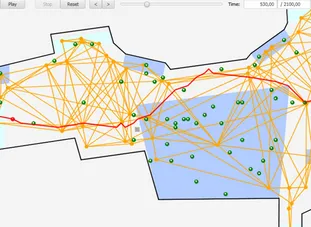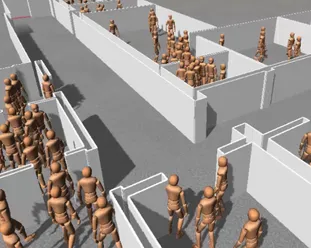MomenTUM




Description
For pedestrian dynamics research, the chair of computational modeling and simulation created a new pedestrian simulator under the lead of Dr. Peter M. Kielar. The simulator links modern concepts of practical and theoretical computer science with our in-depth background in pedestrian dynamics; thus, it is a perfect platform to implement new but also well-known behavior modeling approaches from the field of pedestrian dynamics.
The simulator enables our research group to rapidly research, develop, implement, analyze, and compare pedestrian behavior models. Hence, the simulator is a generic, extensible, and modular concept to integrate a broad range of pedestrian, utility and layout models. MomenTUMv2 provides a flexible execution pipeline to run any number of behavior models in arbitrary combinations. For example, a cellular automata model can be connected to a graph-based routing model that is connected to an origin-destination matrix approach.
MomenTUMv2 is based on an evaluation of the software architecture of MomenTUM(v1), which is a pedestrian simulator created by Dr. Angelika Kneidl and Dr. Maximilian Bügler. Without their pioneer work, MomentTUM could not be designed as it is.
Publication and citation
If you use the framwork you have to cite:
Kielar, Peter M.; Biedermann, Daniel H.; Borrmann, André (2016)
MomenTUMv2: A Modular, Extensible, and Generic Agent-Based Pedestrian Behavior Simulation Framework
Technische Universität München, TUM-I1643
and
Kielar, Peter M. (2017)
Kognitive Modellierung und Computergestützte Simulation der Räumlich-Sequenziellen Zielauswahl von Fußgängern
PhD Thesis, Technische Universität München
We applied multiple available tools, libraries, and frameworks in the simulation framework.
For details, take a look in the technical report.
Repository
Visit our project page on GitHub. Here, you can find code and further information.
Contact
Dr. Peter Kielar
